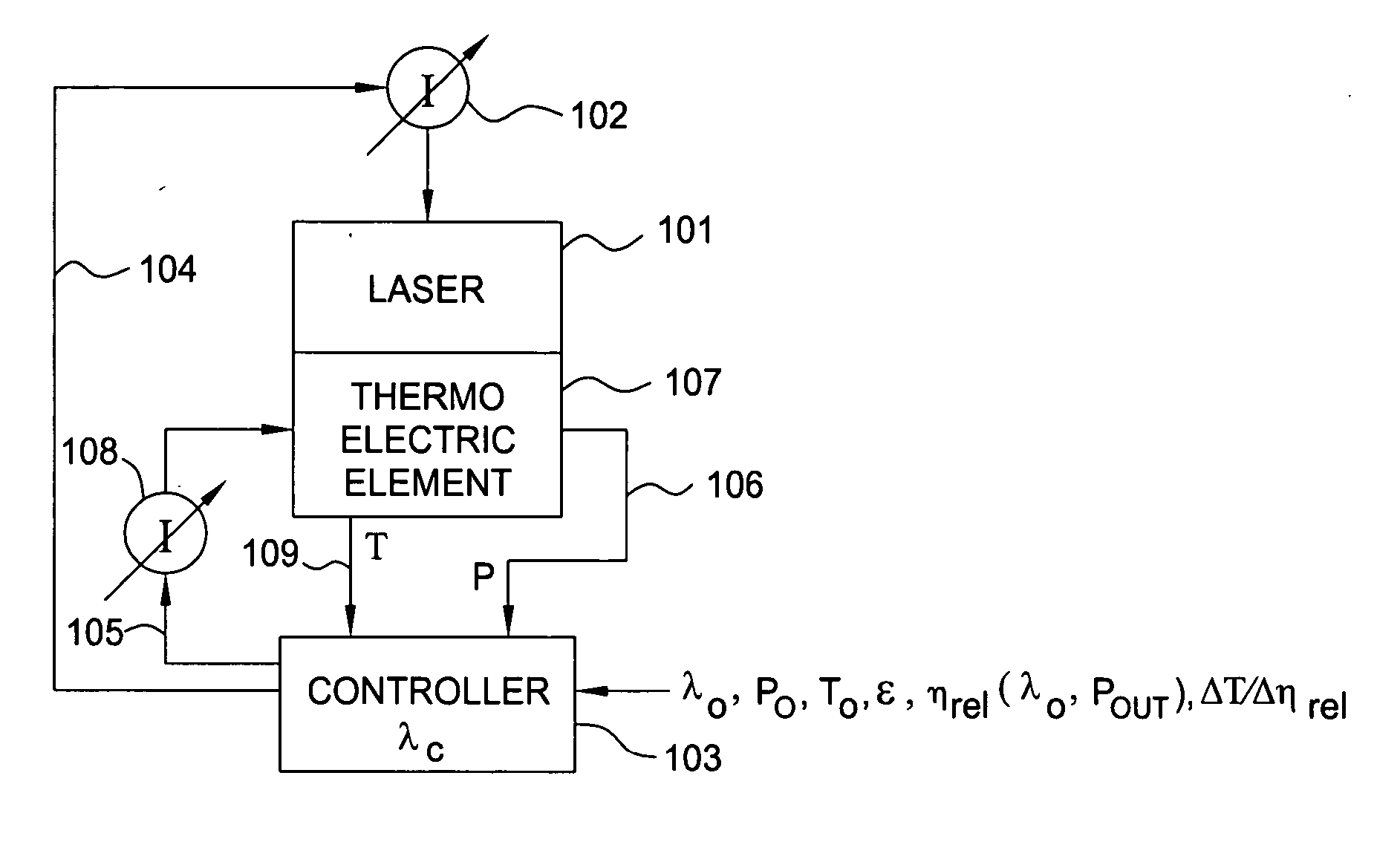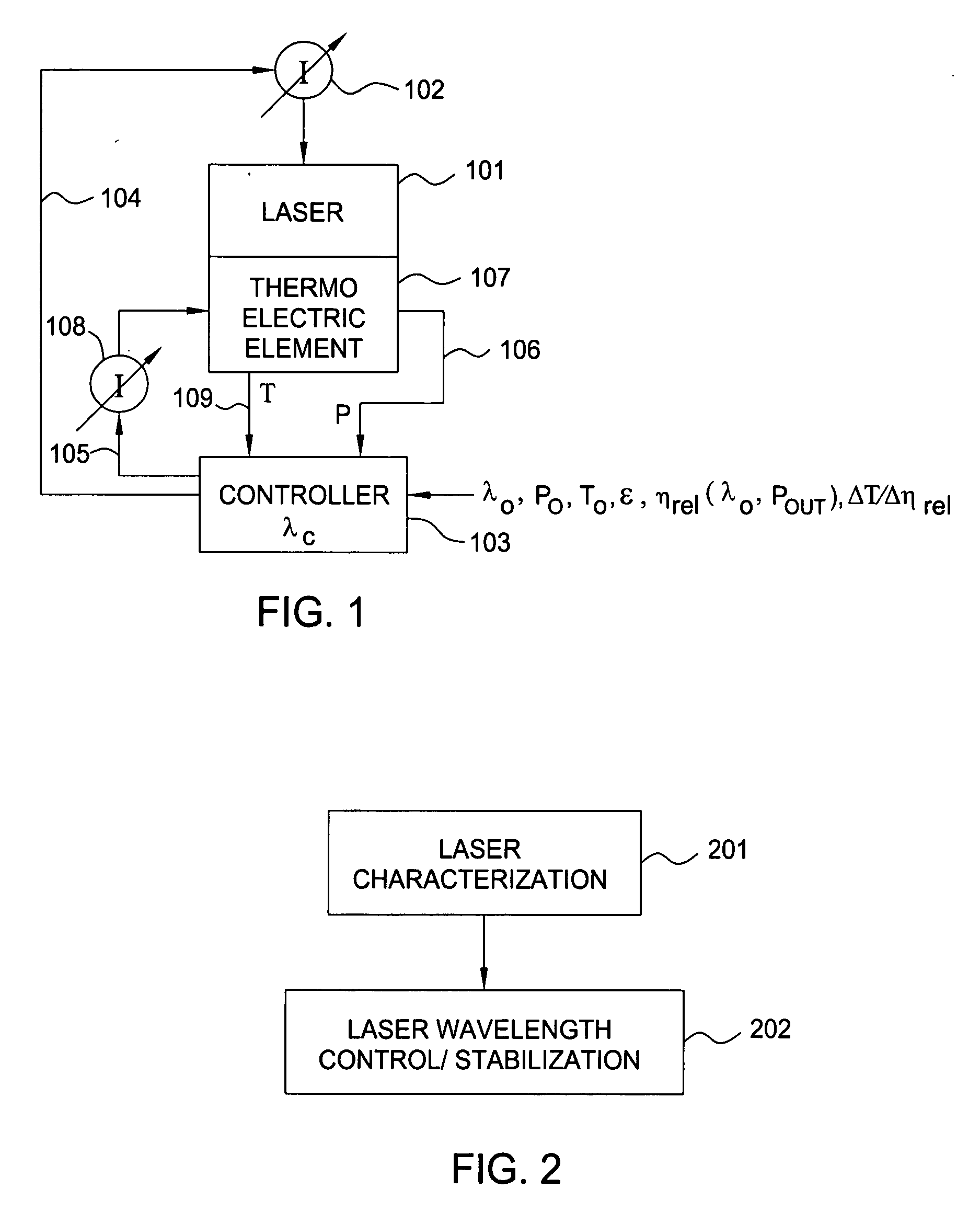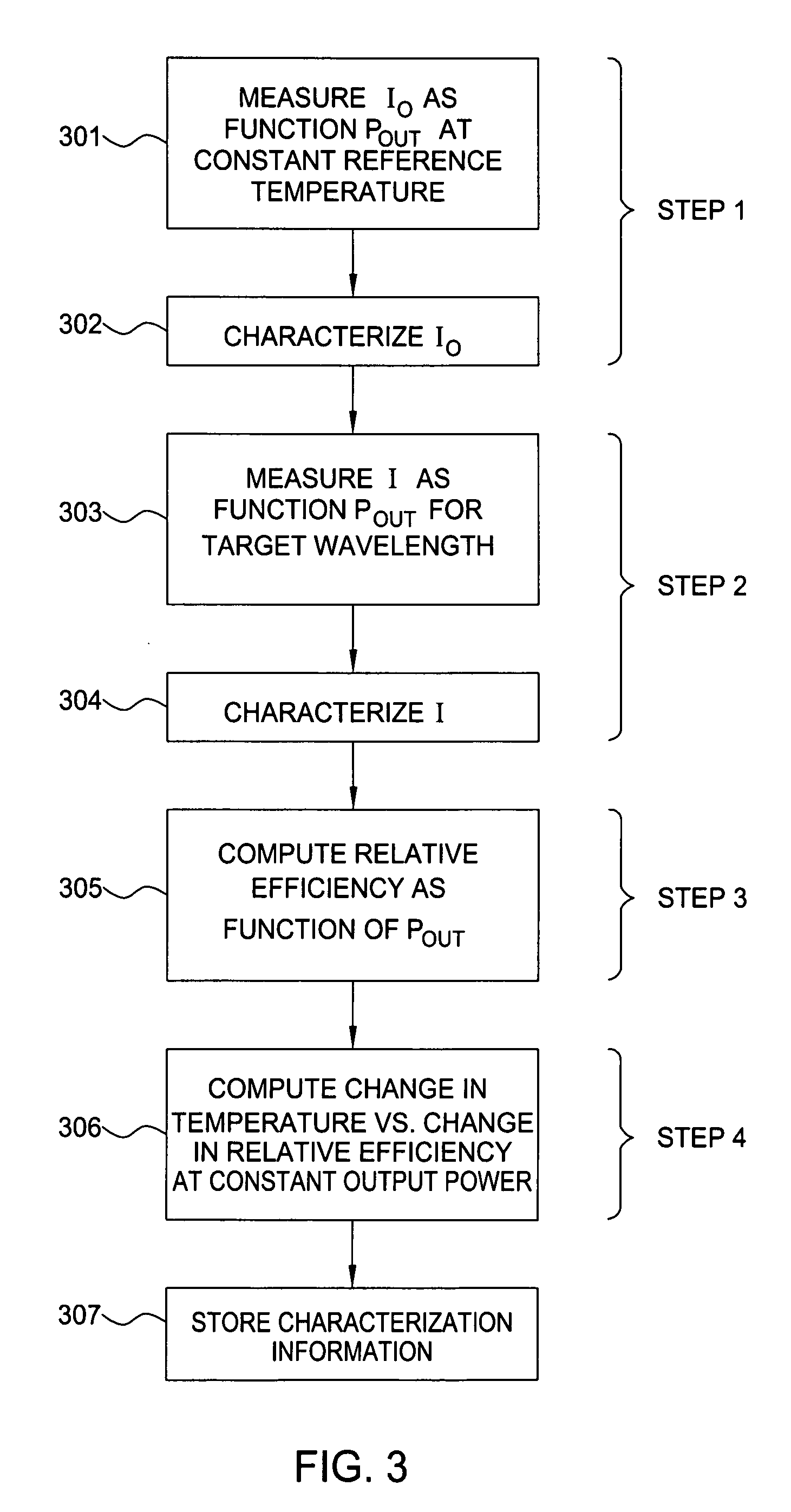Laser wavelength control arrangement and method
a technology of laser wavelength and control arrangement, which is applied in the direction of semiconductor lasers, laser details, electrical equipment, etc., can solve the problems of difficult control and stabilization of wavelength and power of lasers, no one of these techniques is applicable to all specifics, and the high power transmission of such a narrow linewidth laser is severely hampered, etc., to achieve accurate wavelength control, the effect of low cos
- Summary
- Abstract
- Description
- Claims
- Application Information
AI Technical Summary
Benefits of technology
Problems solved by technology
Method used
Image
Examples
Embodiment Construction
[0022] The following terms and variables used within this description are provided below for ease of reference: [0023] Pout=laser output power; [0024] P0=target laser output power; [0025] I=laser injection current; [0026] I0=reference laser injection current; [0027]λc=laser wavelength; [0028]λ0=target wavelength; [0029]ηrel=relative efficiency; [0030]Δηrel=relative efficiency change; [0031]ΔT=temperature change; [0032]ε=wavelength adjustment threshold value; [0033] t=time; and [0034] t0=reference time.
[0035] A typical operating environment for practicing the present invention is shown in a simplified block diagram in FIG. 1. A laser 101 driven by a controllable injection current source 102 is monitored, measured, stabilized, and controlled to operate at a desired target operating wavelength and output power by a controller 103. Controller 103 supplies appropriate control signals both to the controllable current source 102 that supplies the laser injection current on lead 104 and to...
PUM
 Login to View More
Login to View More Abstract
Description
Claims
Application Information
 Login to View More
Login to View More - R&D
- Intellectual Property
- Life Sciences
- Materials
- Tech Scout
- Unparalleled Data Quality
- Higher Quality Content
- 60% Fewer Hallucinations
Browse by: Latest US Patents, China's latest patents, Technical Efficacy Thesaurus, Application Domain, Technology Topic, Popular Technical Reports.
© 2025 PatSnap. All rights reserved.Legal|Privacy policy|Modern Slavery Act Transparency Statement|Sitemap|About US| Contact US: help@patsnap.com



